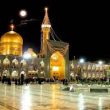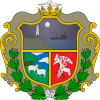“Future Direction of Tourism Policy Studies” President of Human Logistics & Tourism Laboratory Teramae Shuichi, PhD
公開日:
:
最終更新日:2023/05/28
人口、地域、
Future Direction of Tourism Policy Studies
~Encounter of Japanese word“観光”and English word“tourist” ~
TERAMAE Shuichi PhD
Keyword: Human logistics, third-party, the tourist culture gene
“Tourist” concept generated with the popularization of travel. In that case, in Japan, it would be the Edo period in the 18th century when the phenomenon of “Visit Ise Shrine” occured. While the concept was born, the lexical representing it had not been unified. Also its social need was small. If the “sightseeing people” had been used as a lexical representing the concept, there was no confusion. But in Japan, it began to converge in a special lexical “people watching country’s light “.
In Japan, foreign currency acquisition policy had been launched as an important policy in around 1930. International Tourism Bureau (formal English name was “Board of Tourist Industry”) for the attraction of foreign tourists was installed, and then trade bureau for the export promotion was installed. National Treasure Preservation Act and the National Parks Law were enacted for foreigners. By the government adopted the lexical “watching country’s light”, the concept “tourism” is rapidly began to converge on the lexical” watching country’s light “. Through the Asahi Shimbun and the Yomiuri Shimbun article data analysis, it is demonstrated. Ministry of Railways had been described as the etymology of the lexical ” watching country’s light “, which was the I Ching Chinese classical. Its Original interpretation means “outbound”. However, the Ministry of Railways was used by the meaning of “inbound”. I Ching describes as “going to watch the light of the country.” This country in this case, in ancient China meant a fort city. This influence, in Japan, lexical ” watching country’s light ” has been used as those with cross-border concept.
For International tourism policy of the Ministry of Railways, foreign currency acquisition was an object. However, it was decided to show the attitude of “show the imperial Japanese culture” to foreigners. With tourism advertising business overseas, tourist facilities for foreigners in Japan had been developed. Initially, tourist facilities were easily classified between Japanese and foreigners. However, gradually along with the Westernization of Japanese life, distinction became thinner. The tourist facilities became to be for Japanese tourists in the real intention. Therefore, the policy of local government and local tourism association was referred to as the “inner main outside subordinate”. However, under the quasi-war footing, lexical “watching country’s light ” did not appear in front. On the basis of welfare administration, the lexical “recreation” and “rest” had been used. This effect was continued even after the war policy. After the end of the war, the acquisition of foreign currency was a national policy, the development of tourism road was carried out for the acquisition of foreign currency. While hotel administration, national park administration and spa administration were done by Ministry of Health and Welfare, the lexical “watching country’s light” was not used.
In the 21st century, Japan entered the population decline society. To expand the exchange population became the existence value of the municipality. Acquisition of foreign currency disappeared from the purpose of the Tourism Nation Promotion Basic Law. Its purpose is “to show the pride of the region”. Saeki Muneyoshi, the founder of Kurobe Alpine Route insisted that Tourism was to show the differences between other regions. On the other hand, the “Policy” is a power act in order to eliminate the differences between people. Of course, between “tourist” and “policy”, there is internal dissonance.
In Japanese transport law system, the distinction between daily transport and non-daily transport has disappeared through deregulation policy. In addition, over the policy in general, relative phenomenon of daily and non-daily has occurred. Social sense to divide the only movement for tourism is gone.So, I have proposed the human logistics concept. As well as physical logistics concept, this concept is easy to correspond to the third-party concept being newly developed.
Through location information by smart-phone, it is made to allow the big data analysis of human logistics information. Moreover, through progress in wearable devices, it would become to be possible to grasp the body and the brain reaction against tourism resource in real time. The deployment of the future of regional tourism policy research, with the help of a wearable device, or would not exist at that to discover the tourist culture gene.
関連記事
-

-
🌍🎒2023夏 シニアバックパッカーの旅 2023年8月26日 マシュハド 年間2千万人のムスリムが訪問
FACEBOOK 投稿文 2023.8.26マシュハド マシュハド空港からメトロに
-

-
7月21日 第二回観光ウェアラブル委員会を開催して
満倉靖恵慶応大学理工学部准教授と㈱ナビタイムジャパン野津直樹氏に講演を頂いた。 満倉先生は「脳
-

-
『プロヴァンスの村の終焉』上・下 ジャン=ピエール・ルゴフ著 2017年10月15日
市長時代にピーターメイルの「プロヴァンスの12か月」読み、観光地づくりの参考にしたいと孫を連れて南仏
-

-
『日本人のためのアフリカ入門』『アフリカを見る アフリカから見る』白戸圭一
アフリカ旅行にあたって、白戸圭一氏(毎日新聞OB)の「日本人のためのアメリカ入門」(2011年)「
-

-
中国の観光アウトバウンド政策 公研No.675 pp45-46
倉田徹立教大学法学部教授 1997年にアジア通貨危機、2003年にSARS流行発生時、香港経
-

-
国際人流・観光状況の考察と訪日旅行者急増要因の分析(2)
1 国際「観光」客到着数 『UNWTO Tourism Highlights 2016 E
-

-
規制改革会議 無償運送、謝礼に関心 東京交通新聞2017年3月27日
標記の記事が東京交通新聞に出ていた。 規制改革会議が、3月23日現行の基準を緩和できるかヒアリング
-

-
🗾🚖 2017年7月22日 チームネクスト 柳川 北原白秋は文化勲章を受けていない
2017年7月22日柳川を初めて訪れた。水郷柳川として、西鉄が大牟田線の旅客誘致に力をいれてきたとこ
-

-
自動運転車の普及が、タクシー業やビジネスホテルに与える影響論議 早晩、稼業としての存続はなくなる
『公研』2018.12.No.664の江田健二氏と大場紀章氏の対談の
-

-
『からのゆりかご』マーガレット・ハンフリーズ 第2次世界大戦後英国の福祉施設から豪州に集団移住させられた子供たちの存在を記述。英国、豪州のもっと恥ずべき秘密
第2次世界大戦後英国の福祉施設から豪州に集団移住させられた子供たちの存在を記述。英国、豪州のもっ

